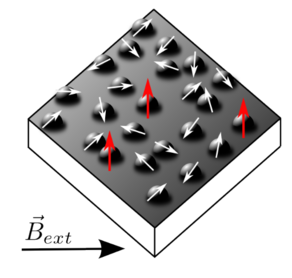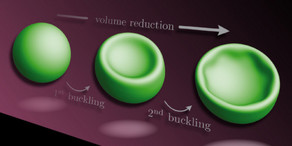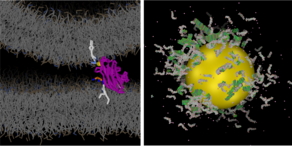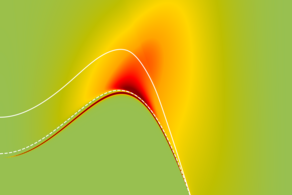Condensed Matter Theory
Welcome to our website
We are glad that you have found your way to us!
Here we, the groups working in the field of Condensed Matter Theory, introduce ourselves. You can find information about our working groups, research, and teaching activities.
News
Ultrafast Exciton Dynamics Revealed
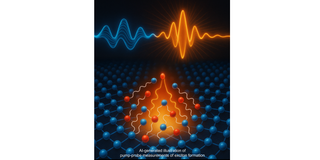
Congratulations to Thomas Bracht
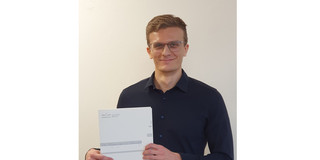
SUPER in the few-photon limit reveals fascinating mechanisms
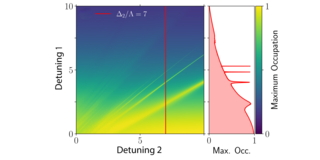
Phonons influence Photon Number Coherence in unusual ways
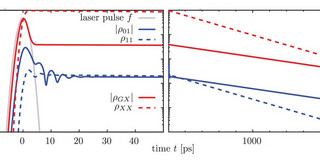
Upcoming Events
Research Focus
The study of condensed matter is a broad and exciting field which, in addition to fundamental questions, also includes applications in perspective. A large subfield deals with solids and there in particular with various semiconductors and more strongly correlated materials such as quantum magnets and superconductors. The structuring of these on nanoscales leads to a wealth of phenomena and control possibilities through specifically tuned interactions between the various degrees of freedom of the charge, the spin and its magnetic moment, and the quantized lattice vibrations, the phonons. Quantum phenomena and their coherent control in space and time are of particular interest, which is a basis of quantum information processing. We investigate the time-dependent non-equilibrium physics essential and novel in this context with optical and spectroscopic methods, for example, with laser pulses, with radiation from the terahertz to the X-ray range. The coupling of light and matter for single photons up to that of ultra-intense light fields is therefore a central aspect.
The study of soft matter is a second fascinating focus of condensed matter physics. Here, for example, biological membranes and proteins or amorphous materials are studied for their physical behavior and how it is affected by their chemistry. Transport in cells and mobility of microorganisms are further exciting issues.
In general, experimental and theoretical groups work hand in hand to quantitatively understand measured results, jointly formulate and investigate new questions, and thus enable innovative advances.
The Condensed Matter group is the coordinator of the German-Russian Collaborative Research Center TRR 160 and participates in the Collaborative Research Center 142, the BMBF joint project QLink.X and the Cluster of Excellence RESOLV. At the EU level, for example, we participate in the FET Open program and conduct research funded by Starting Grants and Consolidator Grants from the European Research Council.
The theory group studies the interplay of spin and charge degrees of freedom in correlated materials and their coherent control in equilibrium and nonequilibrium. We are concerned with the influence of dynamical screening of local moments via the so-called Kondo effect on current-voltage characteristics or with inelastic contributions to scanning tunneling spectroscopy on molecules. The modeling of the emergence of free magnetic degrees of freedom in multi-perturbation problems also belongs to our range of topics, as does the theoretical simulation of the effect of laser pulses on electron and nuclear spins in ensembles of quantum dots, where spin noise leads to the decoherence of a pulse-driven spin dynamics. The latter activities are located in the Collaborative Research Center TRR 160, and are studied on the supercomputers at Forschungszentrum Jülich.
Anders group
Professorship for Theoretical Physics:
Coherent Control of Complex Quantum Systems
The focus of this research group is a realistic description of environment effects on open quantum systems. This facilitates the design of quantum devices and the development of control protocols, which make the devices robust against environment influences or even use the coupling to the environment to one's advantage, such as in phonon-assisted state preparation protocols.
To this end, we develop new methods that account for environment influences beyond conventional approximations. One of our current approaches, so-called process tensors, combines path integrals with tensor network methods, and delivers a numerically exact description of open quantum systems while being very generally applicable.
Cygorek group
Junior Research Group on Quantum Technologies
Our research focuses on the theoretical description of non-equilibrium phenomena in many-body quantum systems using numerical methods as well as novel quantum simulation methods executed on modern quantum computers. We collaborate intensively with the theoretical and experimental solid state physicists of the department as well as with other departments and institutes in the area of quantum computer applications. We work together with the German Aerospace Center (DLR) to evaluate the performance of near term quantum computers for quantum simulations, as well as with the Forschungszentrum Jülich and the Los Alamos National Laboratory in the United States.
Fauseweh group
Junior Professorship for Theoretical Physics - Theory of Condensed Matter
The research group deals with soft matter theory and biological physics. We study statistical physics, mechanics and hydrodynamics of soft and biological matter using analytical and numerical methods. In the soft matter field, the main interests are polymer physics, rheology of elastic materials such as capsules or shells, active self-propelled systems, and microswimmers. We are also actively developing new Monte Carlo simulation techniques (event-chain Monte Carlo) and new applications of machine learning in soft matter physics. In biological physics, cytoskeletal filaments (actin and microtubules) are the main topic. They convert chemical energy (ATP or GTP) during their polymerization to generate forces and motion at the cellular level. We study the physics of single filaments to bundles and networks of many filaments, and from equilibrium fluctuation to chemical drive by polymerization or molecular motors.
Kierfeld group
Professorship for Theoretical Physics:
Soft Matter Theory
Modern technology makes it possible today to produce structures in the size range of a few nanometers, i.e. thousands of these nanostructures fit into the diameter of a hair. For the movement of the particles in these structures, a trillionth of a second, i.e. a picosecond, is already a small eternity. On these extreme scales, completely new effects arise compared to what we know from our everyday life, because quantum physics dominates there. These effects can be studied with laser pulses and even the dynamics in the nanostructures can be controlled. Understanding them requires theoretical description and computer-aided simulations, which is the focus of our work. We consider structures made of semiconductor materials, especially so-called quantum dots, as well as metallic structures that act like antennas for visible light. The simulations allow us to predict how to control the dynamics, which is of crucial importance for applications in quantum information technology.
Reiter group
Research Group in Theoretical Physics:
Theory of Solid-State Nanostructures for Quantum Technologies
The research group employs molecular simulation techniques to tackle relevant problems in the field of biophysics and related molecular fields within a multidisciplinary and interdisciplinary research environment (e.g., the Resolv excellence cluster). Particularly, we focus on the development of enhanced sampling and multiscale methods to study phenomena occurring at fluid (e.g., biological lipid membranes) and solid interfaces (e.g., metal interfaces and graphene). An important current focuses is on a subject coined "facial recognition of fluid interfaces", i.e., how can (bio)molecules optimally recognize and bind fluid interfaces despite their highly disordered and dynamic nature. To this aim, we develop evolutionary molecular dynamics simulations (evo-MD) methods which couple evolutionary algorithms (sampling of chemical space) to coarse-grained molecular dynamic simulations (sampling of phase-space) to resolve the global optima in chemical space. In essence, evo-MD enables molecules to adapt themselves to optimally recognize fluid interfaces in the course of a simulated evolution. Our research may yield unique insights on how biomolecules such as peptides and proteins recognize distinct fluid features in biological lipid membranes with interesting applications for the fields of drug design, surfactant design, and the design of (bio)sensors.
Risselada group
Professorship for Theoretical Physics:
Computational Interface Physics
Since October 1st Prof. Dr. Igor Schapiro works on computational tools to understand chemical reactions in organic and biomolecules at the department of physics and the UA Ruhr Research Center Chemical Science and Sustainability.
Schapiro group
Professorship for Theoretical Biophysics
My research group deals with the quantum theory of condensed matter systems. We study solid-state systems in which strong correlations prevail, so that metals become Mott insulators. Understanding their magnetic properties and elementary excitations, as measured by inelastic scattering or absorption, is our goal. Binding phenomena are particularly fascinating. Since recently, we also focus on the topological properties of electronic and magnetic excitations that lead to edge modes and are important for magnonics. Physics far from normal equilibrium is a second core theme where we tackle questions such as the follwing. Can open quantum systems be manipulated so that they acquire special quantum states? How can coherence be maintained which is essential for quantum information processing? Which methods of detection are suitable to detect non-equilibrium states?
Uhrig group
Professorship for Theoretical Physics:
Theory of Condensed Matter

